일환으로
Nara Youn
Joeng 718-358-8899

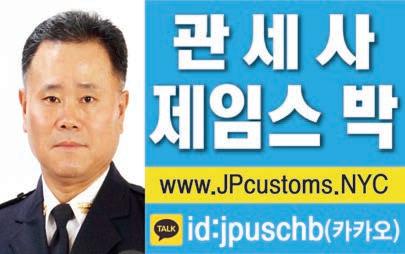


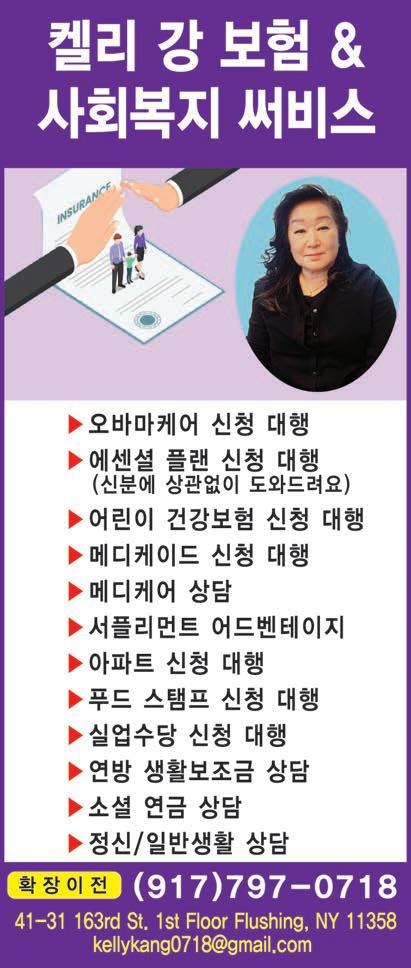


sjoeng@cpc-nyc.org

캠페인
제공하는 리소스페어 순
대표는“장애인을 둔

가장들이 많이 참석하여 필
받아가길 바란다”고 말 했다. 등록은 무료이고 간단한 아 침 식사가 제공 된다.
요일
인원
라인
된다. 등록비는 회원 100달러, 비회
달러.
; 718-353-4553 ext.30
wcaqueens.org


<A1면에서 계속>



성명은“본 유권자협의회는
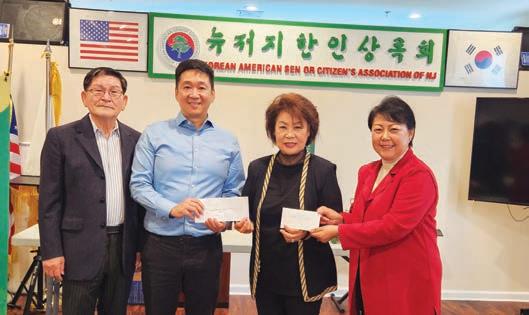
소수민족 권리찾기 운동을 투표
참여만이 최선의 길임에, 자생시 민협의회로 출범하였으나, 팰팍

의 현실은 제대로된 정치인을 선
출 하해만 된다는 여론으로 매년
선거에 지지후보를 내고 있다. 그 동안 민주당 소속 후보가 타 민족 후보와의 경선에서 당연히 한인

후보를 도와 왔으나, 지난해 선거 부터는 한인 후보간의 경선으로 지지후보를 결정하는것이 결코 쉬 운일은 아니었다. 선정 기준은 후보 개인적인 정치성향과 여론 을 종합, 유권자협의회 운영위원 회의 여러차례의 신중한 토의 결 과에 따라 결정했다. 지난해 11월 시의원 선거 본선거에 공화당 시 의원 후보 스테파니 장을 지지 성
원했고,금년 6월 예비선거는 크리 스 정 후보를 지지했다”고 그간의 사정을 설명했다.
성명은 이어“이번 11월 8일 사 상 처음으로 팰팍 시장은 한인후 보 끼리의 선거로 어느 때보다 유 권자협의회의 결정이 어려웠다. 30여년 팰팍 민주당 정권을 종식 시켜야 한다는 의견의 일치는 이 미 오래 되었으나 공식입장 발표 는 신중해야만 했다. 지난 24일 팰 팍 타운 행정관인 데이빗 로렌조 씨의 스테파니장 후보 재고발사


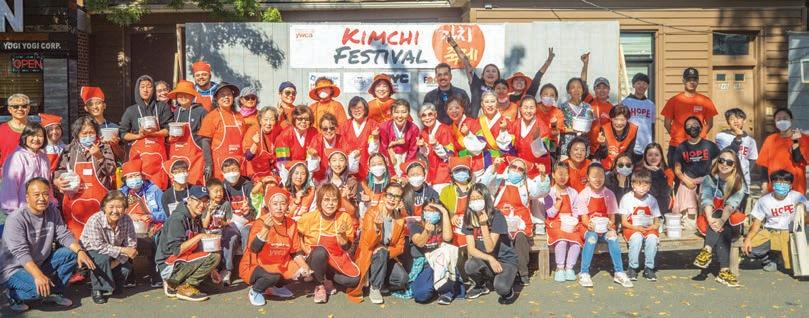
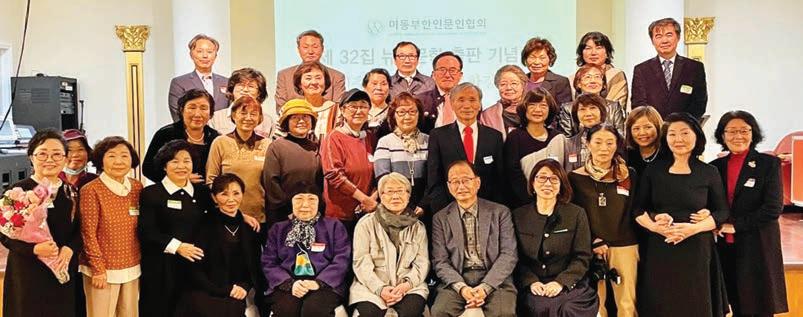
건의 전말 기자회견 후 도저히 받 아들일 수 없다는 많은 유권자들 의 분노에 접하였고, 25일 마침내 팰팍 집권 민주당의 유일한 바른 소리꾼 박재관 의원의 그간에 쌓 여온 고뇌의 눈물을 보면서 유권 자 협의회 운영위원들은 이제 더 이상 미룰 수없는 절대절명의 순 간임을 모두 인식하고 10월 25일 오후 3시“이제는 바꾸자”라는 구 호를 함께 외쳤다. 이제부터 유권 자협의회는 팰팍 선거에 기호 1번 후보 팀을 합법적인 모든 방법을

동원하여 지원함을 공식적으로 선언 한다”고 밝혔다. 팰팍 한인사회의 많은 유권자 들은 팰팍한인유권자협의회와 박 재관 시의원의 고뇌어린 결정에 수긍하매 공화당 지지로 돌아서 고 있다. 그러나 팰팍은 민주당 기득권 층을 지지하는 유권자들이 아직 건재하고 있어 한인 유권자들의 전향이 어느 정도의 득표로 연결 될지 주목 대상이다. [송의용 기자]
저지한인상록회 후
밤 행사가 28일(금) 오후 7
뉴저지 포트리에 있는 더블트 리호텔(2117 Route 4 Eastbound Fort Lee NJ 0702)에서 열린다. 뉴저지상록회(회장 차영자)는 “28일 후원의 밤 행사는 시니어 사회복지 등의 확대를 모색하는 뉴저지한인상록회의 후원을 위 한 모금 행사이다. 그동안 소리 없이 많은 후원을 해주신 후원자 들의 많은 참여를 기대한다.”고
Imagine making the life-changing decision to emigrate from your homeland to a land of promised opportunities. This was the leap of faith that 7.5 million Koreans had to make.

Today, I’d like to talk about the Korean diaspora in China compared to the Korean diaspora in the world. I love learning and sharing pieces of Korean culture, so I hope you’ll learn as much as I did when I was researching about Korean diaspora. I’ll talk about the Korean diaspora in four parts. First, diaspora in China, second, repatriation out of China, third, Korean diaspora in the world, and finally, my takeaways. Before we dive into the Korean diaspora in the world, we’ll begin by looking at Korean diaspora in China.
To gain an understanding of the Korean diaspora in China, we’ll first look at their motivations to emigrate from Korea, how the Koreans settled into China and their contributions to China. The beginning of significant Korean diaspora in China dates back to Japanese colonial rule over Korea in
1910. This caused some Koreans to flee over the North Korean border to China, and there, they settled in groups.
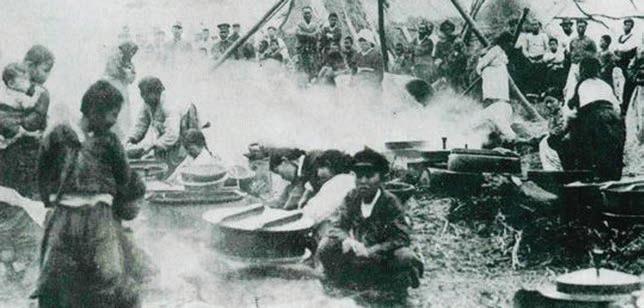
According to The Diplomat, “Of the approximately two million Chinese Korean living in China, about half reside in Jilin Province, one of the country’s three northern provinces” (Denny, 2016). This quote shows that after they immigrated to China, Koreans chose to concentrate and build a community in Jilin Province. Furthermore, they made considerable contributions to their host country. Those Chinese Koreans would then go on to join the Chinese Communist Party’s (CCP) anti-Japanese forces during the 1920s and ’30 (Park, 2018). They also fought during the War of Liberation (1946-1949) and Korean War (1950-1953), where bilingual Joseonjok (조선족) soldiers served as messengers and translators in Chinese forces. Fleeing from Japanese colonial rule and significant contributions to Chinese forces were some of the hardships Koreans went through to settle in China.
Secondly, I’ll talk about why Chinese Koreans repatriated, or went back to their homeland, and the discrimination they felt after their repatriation. You might be wondering why Chinese Koreans would build a community in China all to repatriate. Joseonjok, or ethnic Koreans who migrated to northeast China but returned to their homeland, returned to South Korea because of an improvement in the standard of living and the economy. According to The Diplomat, “…older Chinese Koreans, (…) fled across the border to North Korea during the famine years of the

Great Leap Forward and the mayhem of the Cultural Revolution…” (Denny, 2016). Those are just some of the reasons Koreans chose to repatriate. Josenjok are the largest group of foreign citizens in Korea, and they make higher salaries than they would in China, but they’re bitter about the discrimination they face. According to Korea Exposé, “In 2015, six out of 10 South Koreans in their twenties and thirties viewed Joseonsok as poor, badly mannered or ‘to be on guard against’…” This quote shows how negatively most South Koreans view Josenjok. You now know the motivation, contributions, challenges, and discrimination Joseonjok went through after their diaspora in China and their repatriation.
Thirdly, I’ll explore how the Korean diaspora in China compares to the Korean diaspora in the world. Korean diaspora in different parts of the world was similar. Korean migration came in two big waves: the old and the new. The old Korean migrants were forced out by poverty, war, and oppression in their homeland, while the new migrants were attracted by better opportunities in the host
countries. Additionally, significant Korean migration to different countries began around the same time. Significant Korean diaspora to China and Japan began during the Japanese colonial rule over Korea in 1910, while the first Koreans came to the U.S. in 1903 to work in sugarcane fields. Furthermore, all Korean diasporas had a positive effect on Korea’s economy.
According to the Migration Data Portal, “Even when skilled emigrants do not return to their countries of origin, they often provide the skilled professionals that remained behind with access to the valuable knowledge learned abroad, referred to as ‘brain bank.’” (Kapur, 2001). To recap, the Korean diaspora in different parts of the world is similar because there are two distinct generations of Korean migrants in all countries (the old and the new), significant Korean migration began during the beginning of the 20th century, and because Korean diaspora helped industrialize Korea’s economy.
Finally, I’ll talk about my takeaways from my research. While I was researching for this essay, I was amazed by the fact that Korean
immigrants stayed faithful to their traditions and culture, even in their host country. According to Yoon, InJin, a South Korean sociologist, “Few returned to the homeland but preserved their collective identities and ethnic cultures in their host societies.” This quote shows that even if Korean immigrants don’t return to Korea, they still hold on to their Korean traditions and culture, which I see around me too. From my Korean teachers at school that teach Korean culture, history, and language; to Korean supermarkets in my neighborhood, Korean culture is everywhere. In addition, this essay opened my eyes to the hardships Korean immigrants went through to find better opportunities in a foreign country. They went through wars; they went through discrimination, and yet they’re still here. My respect for the Koreans around me increased tenfold to see that Korean culture is so widespread after understanding the hardships Koreans went through to make it so.
In my speech today, I compared the Korean diaspora in China to the Korean diaspora in the world. I talked about the Korean diaspora into China, their repatriation out of China, the similarities between the different diasporas, and what we can learn from it. I hope I gave you all enough information to adequately understand the motivations, challenges, and influences of the Korean diaspora into China and how that was similar to Korean diaspora in the world. The next time you see pieces of Korean culture around you, think about the challenges Korean immigrants went through to find freedom and spread their culture. Thank you for listening.

이어 지네
지붕 삼아 곱게 단장된
뻗어내린 가로수 터널의


넓은 벽은 샛빨간 꽃이 만발하여라 가다보면 앞 길을 가로막는 드높은 산들을 이리저리로 돌며 뚫고 통과 하는 동안에 버스안 우리 가족들은 싱글벙글 희색이 만면 하여라 어느새 까까이 바라다 보이는 잔잔한 호수가에 도랑도랑 자리 잡은 사과 나무 가지와 잎에 숨어서 빨간 얼굴 내미는 사과가 방긋 웃는다 우뚝우뚝선 사과 나무들은 우리들을 바라다 보면서 반가워서 어서 오시라고 손을 한들한들 하네 그려 상상을 초월한 무궁무진 변화무쌍한 온천하의 아름다움이여 거룩된 하나님의 솜씨에 감동감화 기쁨이 넘처 감사를 돌려 드리며 할렐루야
윤석열 대통령이 25일 국회에
새해 예산안 관련 시정연설을

윤 대통령의 국회 시정연설
취임 1주일 뒤인 5월 16일 추경

이어 두 번째, 본예산 기 준으로는 취임 후 처음이다. 다섯 달 전 연설이 코로나19 피해 보상 등 민생안정에 중점을 뒀다면 이번 본예산 연설에선 초 유의 경제·안보위기 극복을 강 조하는 데 초점을 맞췄다. 연설의 핵심인 경제 분야의 키워드로 재 정건전화와‘약자복지’를 제시했 다. 윤 대통령은“그동안 정치적 목적이 앞선 방만한 재정 운용으 로 재정수지 적자가 빠르게 확대 되었고, 나라의 빚은 GDP의 절 반 수준인 1천조 원을 이미 넘어 섰다”며“역대 최대 규모인 24조 원의 지출 구조조정을 단행한 것 은 건전 재정의 전환점이 될 것” 이라고 했다. 국가 재정 악화가 지난 문재인 정부에서 선거를 의 식한 선심성‘퍼주기’탓임을 지 적하면서 재정 건전성 복원 의지 를 강력하게 밝힌 것이다. 그러면서 윤 대통령은“경제 가 어려울수록 더 큰 어려움을 겪 는 사회적 약자를 보호하는 것은 국가의 기본적 책무”라며‘약자 복지’를 추구하겠다고 했다. 구 체적으로는 한부모가족 지원 강
화, 장애인 고용장려금 인상, 반 지하·쪽방 거주자 지원, 기초연 금 인상 등을 거론했다. 복지 예 산을 경제적으로
사병봉급 인상과 관련해서도 “현재 82만원에서 내년 130만원 까지 인상하겠다”며‘2025년 205 만원 목표’를 재확인했다. 윤 대 통령은 산업 분야에서도 정치색 을 배제하고 실용성을 추구하겠 다는 모습을 보였다. 그는 특히 “무너진 원자력 생태계 복원이 시급하다. 원전 수출을 적극 지원 하겠다”며‘탈원전’에 쐐기를 박 았다. 윤 대통령은 국정운영의 새 설 계도를 펼쳐 보이면서 국회와 함께 머리를 맞댈 때 완성될 수 있다”고 초당적 협력을 거듭 촉 구했다. 특히 경제안보 위기 극복 에“여야가 따로 있을 수 없다”며 동참할 것을 호소했지만, 민주당 은 예고한 대로 시정연설에 불참 했다.

대통령이 국회 연단에 오른 시 정연설을 야당이 보이콧한 것은 헌정사에 유례가 없는 일이다. 국 가적 위기 속에서도 말로만 민생 을 외치며
안 설명 자체를 듣지 않겠다는 것 은 어떠한 이유로도 정당화될 수 없다. 시정연설 파행 사태에 여당과 정부도 책임을 피하기 어렵다. 국 민의힘 지도부는 대통령실을 움 직여서라도 야당이 원하는 여러 조건 중 한 가지를 수용해 윤 대 통령이 절반이 텅 빈 본회의장에 서 시정연설을 하는 상황을 막았 어야 했다. 대통령과 여야 간 물밑 소통 창구인 정무 기능이 대통령실에 과연 존재하는지조차 의문스럽 다.‘정치의 실종 으로 국정운영 이 어려워지고 민생이 팍팍해진 다면 결국 모든 짐은 대통령과 여 당이 안고 갈 수밖에 없다. 국민의힘은 어렵더라도 조속 히 정치를 복원해 민생 안정과 위 기 극복에 적극 나서야 할 것이 다. 이제라도



